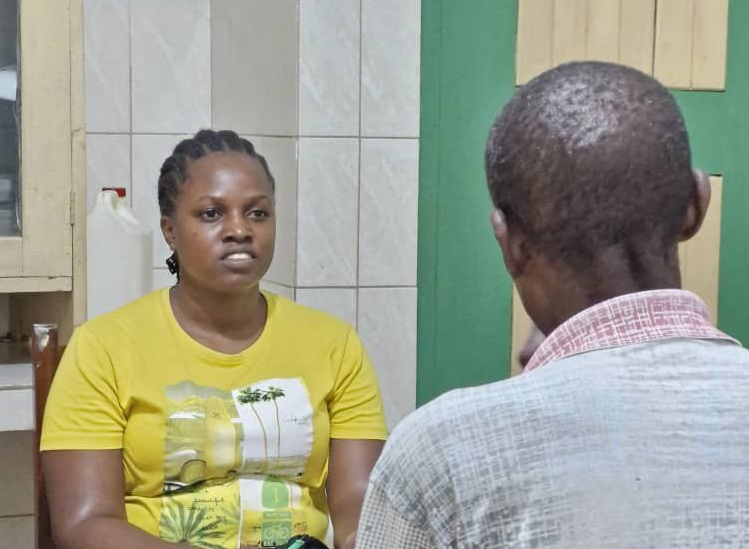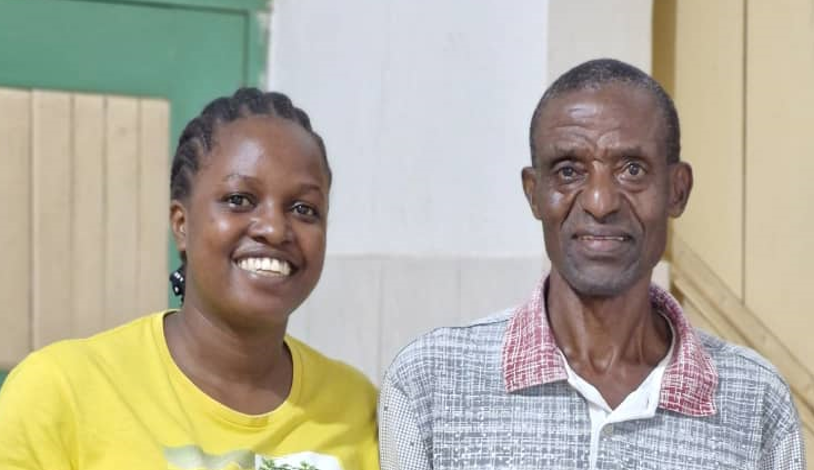
Interviewed and written by
Ms. Witness Andrew John (One Health Society)

Reviewed by
Mr. Yona Yangaza (One Health Society)
Demographic information:
NAME: Samson Mussa Lwiga
TRIBE: Hehe
SEX: Male
AGE: 63 years
OCCUPATION: Small-scale farming and fishing
He has been smoking cigarettes and drinking local brews for over 10 years. He has a positive family history of leprosy (his grandfather suffered from it). He was married and had two kids, but his wife left him due to leprosy. Currently, he is married to another woman.
Disease History
Mr. Lwiga’s first presentation of symptoms of leprosy dates as far back as 1985 at the age of 24, when he suffered high-grade fever and black patches on his face. His grandfather, who once suffered from leprosy, recognized the signs and gave him traditional medicines, which relieved his symptoms temporarily.
Five years later, he had a second, more serious episode, with high-grade fever, large patches on his face, and numbness in his hands and feet. The numbness was so severe that he could walk barefoot for long distances without realizing he had lost his slippers until he stepped on sharp small stones or felt crashes from sand on his leg. This time, he went to traditional healers, but still no hope of relief was found. The severity of the disease increased thus he failed to keep up with his farming and fishing activities. He travelled to move in with his brother to be taken care, but his sister-in-law stigmatized him. So, they suggested that the only treatment was for him to be isolated in the forests and given his needs there.
With all this isolation, he neither got healed nor cured of his illness. On top of that, stigmatization brought him depression and feelings of worthlessness. His mental health was affected very much and death was all he was feeling.
The moment of suffering lasted for up to 6 more years making a complete 11 years of suffering without professional care. Light shone in 1996, at age 35, his far uncle heard of his sickness and came to give him a helping hand. He took him to a health center where after evaluation of his condition, the doctor suspected him to have leprosy, and he directed Mr. Lwiga to the Nazareth Leprosy Centre. There, thorough examination of his conditions was done, and it was confirmed that he was indeed suffering from leprosy. He was started on treatment.
He was glad of the help that he was finally receiving, but all of a sudden, the light of treatment that once shone was dimmed due to serious drug reaction. Three days after start of his medications, he experienced a severe drug reaction that led to pleural effusion, requiring hospitalization at St. Francis Referral Hospital for almost a year. Thankfully, his prognosis was good, and he was discharged and returned home.
His return was not easy since no one accepted him, and his relatives continued to stigmatize him. His wife left with their two kids and married another man. Life was harsh, and he had to struggle to cope after 12 years of being sick in a community that termed him as disadvantageous.

The life became even harder a year later, when he got sick and was diagnosed with pulmonary tuberculosis. With no one to take care of him, he returned to the Nazareth Leprosy Centre where he was referred to St. Francis Referral Hospital for treatment. After a year of treatment, he was discharged. However, the feeling of stigma from family and neighbors ate him up, leading to make the difficult decision to seek for shelter at the Nazareth Leprosy Centre. Thankfully, he was given shelter, and he took small tasks like taking care of his fellow patients. He also participated in small activities like small-scale farming to earn a living. Few years later, he got married to another woman who is supportive and caring.
A New Beginning
Mr. Lwiga’s journey with leprosy was filled with darkness, that he, himself, saw not a single ray of hope in the beginning. However, with treatment, support from his new wife, and a supportive community and friends, he found hope. He is no longer depressed, and his freedom of speech, association, and right to live are respected. Although he cannot work as much as he did when he was young and energetic, he still makes some significance in the community despite the visible sequelae of leprosy, such as the amputation of his fingers and toes.
A Message of Awareness
Mr. Lwiga’s story highlights that leprosy still exists in the community, but often, patients do not seek or receive help stemming from community beliefs about the disease, which are either stigmatization or superstition in the disease management. Mr. Lwiga wishes the community to understand that the medical attention should be taken as soon as the patient is suspected of leprosy. After thorough investigations, treatment will be established, curing the patient completely. He emphasizes that once leprosy patients are taking their medicines properly, they will not transmit the disease. So, the community has no need to fear leprosy patients but should join hands to support them in their daily lives.
As we have heard in Mr. Lwiga’ s story, leprosy can be complicated with other conditions like tuberculosis. Integrated care the is important to ensure effective care for these patients.
‘Integrated care is important to ensure effective care for these patients. ’
